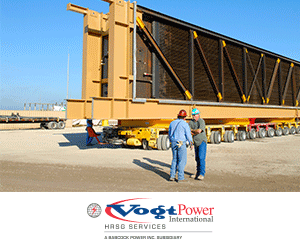
Salem Harbor Station
Owned by Footprint Power Salem Harbor Development LP
Operated by NAES Corp674 MW, two gas-fired 1 × 1 7FA.05-powered combined cycles equipped with Doosan HRSGs and GE A14 steam turbines, located in Salem, Mass
Plant manager: Max Greig
Challenge. Salem Harbor Station is located on the seacoast in the Northeast, where wintertime single-digit temperatures and below-zero wind chills are relatively common. Despite annual surveys and repairs to both heat tracing and insulation, the plant has experienced multiple freeze-related forced outages.
Because many critical valves cannot be stroked without forcing multiple DCS points, plant operators had little visibility on whether critical pumps and valves were available during extended periods of plant shutdown. For example, if an attemperator bypass valve was frozen, it would not be noticed until the plant attempted to start up and the valve failed to open.
Solution. Staff, led by Plant Manager Max Greig, investigated the possibility of creating custom logic to test critical pumps and valves while offline during freezing conditions. DCS Specialist Dave Norcross worked with the plant operations team to identify assets most likely to freeze during extended offline periods. Using his experience on the Mark VIe DCS, Norcross created custom test logic for each asset that would bypass the need for placing forces within the DCS.
Plant operators can now check all assets as part of an automated global test, or individual assets based on plant conditions. Isolation valves are stroked open, then closed. Control valves are stroked to 50%, then 100%, and closed. Critical pumps are started, discharge pressure, and in some cases flow, checked, and shut down. Any discrepancies with the test generate a global alarm and flag the problem asset on the corresponding DCS screen. Operators then can take corrective actions before the issue causes an outage or failed start.
Results. Since the improved testing program was put into service midway through winter 2021-2022, the operations team has used the tests once or more per shift during freezing conditions. Test frequency is determined by ambient temperature: At 32F, the test might be conducted twice daily, at 0F, hourly. Site staff has been able to identify several potential freeze-ups and take immediate mitigating actions. Outcome: The plant has not experienced outage or startup issues related to assets included in the new testing program since its implementation.







